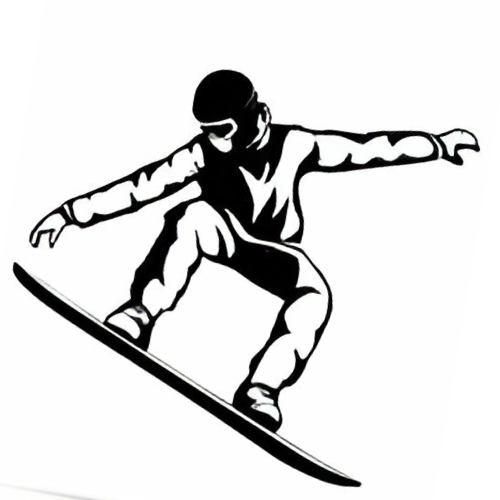Are you looking to buy a pair of goggles for your next skiing but can’t decide? Choosing a ski goggle randomly might increase the chance of having the wrong one, putting your eye protection at stake. Your ski goggle should be sturdy enough, protect UV and harmful rays, and ensure eye comfort. So what to look for in ski goggles while selecting one? Let’s find the answer below in this blog.

What to look for in ski goggles
It’s easy to become perplexed choosing one from several options available. Some sellers claim theirs as the best but show a lack of quality.
So, here are 7 tips that can help you to look for the perfect ski goggles:
1. Choose the perfect lens tint
Many aspects play a role when choosing a lens, like weather, terrain, activities, etc. Whether you ski in the morning, afternoon, or all day long, you need the perfect lens for your eyes. Your main aim is to get a lens tint with the proper color combination, depth perception, color contrast, and protection. Additionally, as per the light conditions, you need the right VLT—Visible Light Transmission that indicates how much light passes through the lens to your eyes. The VLT can help you with additional categories. When there’s low VLT, you have less eye fatigue on sunny mornings. Similarly, high VLT gives you proper depth perception and color contrast on gloomy days.
Here are some examples for you:
- Gold, amber, or yellow lenses can remove blue light in foggy and low light. These lenses can help you to see the bumps clearly.
- Rose copper or light rose lenses are perfect for low-light days.
- With a dark lens tint, you can get more comfortable skiing with better color contrast on sunny days. However, a gray lens can help you see the colors properly.
- You can try a clear lens for nights and sunsets as they have high VLT. Eventually, you get more light in the eyes.
- With photochromic lenses, the light changes automatically according to light or dark days. In most cases, these come in gray or brown lenses.
2. Go for a polarized lens
To reduce glare in sloppy areas and brighten up the areas, you can use the polarized lens on sunny days. However, you may face difficulties when the sun starts going down and long shadows appear. Additionally, they come with better dark lens tint compared to other sun lenses.
3. Check whether it protects against UV
While skiing, you need proper protection from UV rays. You can often have photokeratitis, which is painful eye sunburn. Sometimes, when you are continuously facing UV rays, it can harm your eyes, causing cataracts or other eye diseases. So, it would be best to use ski goggles that blocks 100% of such rays.
4. Get properly fitted goggles
You must choose goggles that would never fall off while skiing. Also, you should fix the straps to fit properly before skiing. If you struggle to adjust the straps or buckles, choose another. You also need to use a helmet along with the goggles. So, your goggles should fit with or without the helmet. Get a goggle with soft rubber buckles that can be pain-free for your scalps. While wide bands are very comfortable, foam inserts can keep the dirt and ice out of your way. The foam can also help to cushion your face. On the other hand, the goggles should fit properly when you’re wearing glasses. Some goggles are specially designed for special cases, such as if you have a medical condition. Many stores allow you to insert lenses as per prescriptions.
5. Check the anti-fog layer
Condensation is a great hassle when you are skiing as the warm air continuously gets in contact with cold air. Additionally, the anti-fog layer vents out the warm air from the inside. So, it would be best to choose goggles with a double lens. So, it would be best to select goggles with a double lens. The anti-fog layer tends to be better in wider vents compared to tiny or narrow vents. However, these vents can make your face cold in a harsh climate. So choose accordingly.
6. Think about your safety
In most winter sports goggles, you will find polycarbonate lenses. These materials are very impact resistant compared to plastics. The optical stores can also help you to get prescription inserts made of polycarbonate lenses. The better the lens and frames, the sturdier the goggles. This means that the lens won’t pop out or break very easily. Additionally, you should get foam inserts in the impact points. You can get polar fleece padding in many goggles that are very warm and cushiony. This padding can also help you wick off the sweat. In the case of ski goggles, you should get frame materials with less impact or polycarbonate instead of metals. These have rubber nosepieces or earpieces which will help you in bumpy skiing and are more comfortable than plastic materials.
7. Return and warranty policy
Popular brands offer warranty and return policies on goggles under several conditions. So ensure it before buying one. It might cost you extra money but save you in the long run from buying a new one again and again. Some stores accept returns when there’s no damage to goggles or lenses without scratches. Therefore, you should never scratch out lenses on the first go. Some manufacturers also replace the damaged lenses for a fee.
Final verdict
Wearing the perfect goggle has several benefits, from protecting your eyes to enhancing the joy of skiing. The best solution is to get properly fitted goggles with the right lens. Additionally, the warranty and return policies can sometimes be your savior. Hopefully, if you follow the tips on what to look for in Ski goggles, you can choose the best one.
